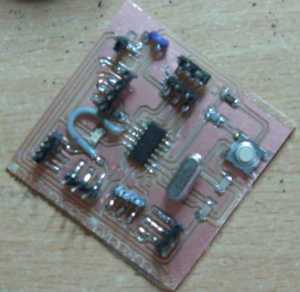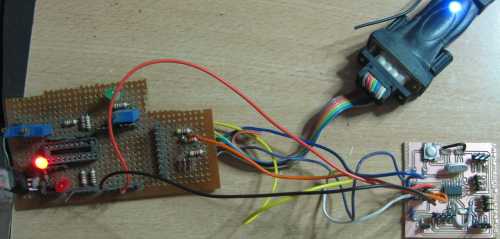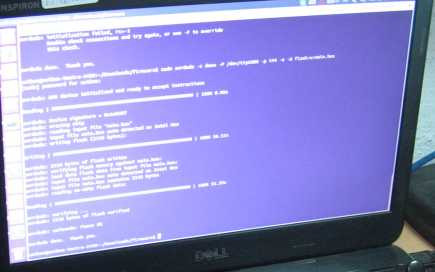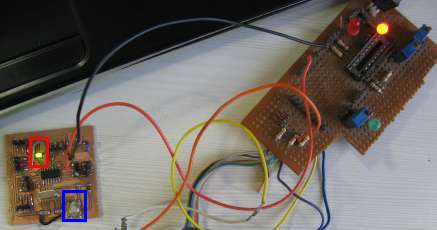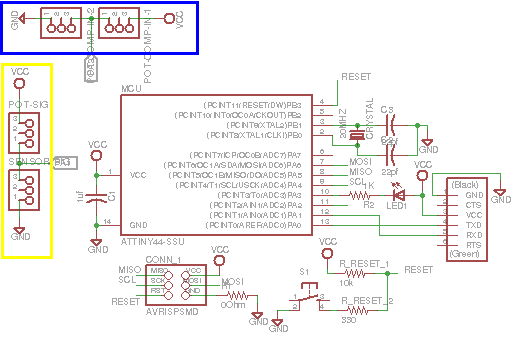
To go ahead with this assignment, a Schematic was drawn up, in Eagle 6.5.0.
I preferred NOT creating a Project. Rather a schematic directly. Main reason was that I did not find any advantage, worth considerable, to have
a project created. Instead opening the schematic directly saved steps.
Eagle, anyway, on its own keeps track of changes and keeps saving backup
files time to time, which is very useful feature. I will populate my notes, very shortly, in order to describe how I created the Schematic and Board files.
About the Functionality
In the schematic, the blue box shows a voltage divider generating a "known voltage". The Yellow box is also a voltage divider, the output of which is
changing based on a (resistive) sensor connected to it, as one of the resisotrs. More on this here(to create this page yet).
Let me describe a few related work-items...
1) The diagram besides shows 5 parts in the schematic. This is a very usefull technique of creating schematics, as the circuit size grows, resulting
into increased complexity. I preferred, making parts of the schematic, to keep it is to see and understand. to Have this
achieved, two different tracks that one wishes to join should be named same and eagle will ask whether one really wants to join the tracks. This allows
the tracks to join but not show in the schematic. Key commands are "name" and "label"
2) W.r.t. the assignment, a reset switch has been added to the ckt. and a LED with limiting resistor too. Initially, I was hesitating to add a
Reset Switch, as was not sure if that will fullfill the assignment. However, eventually, it was found to be falling in place, as a Reset Switch has its own timing
requirements and is always a desired functionality.

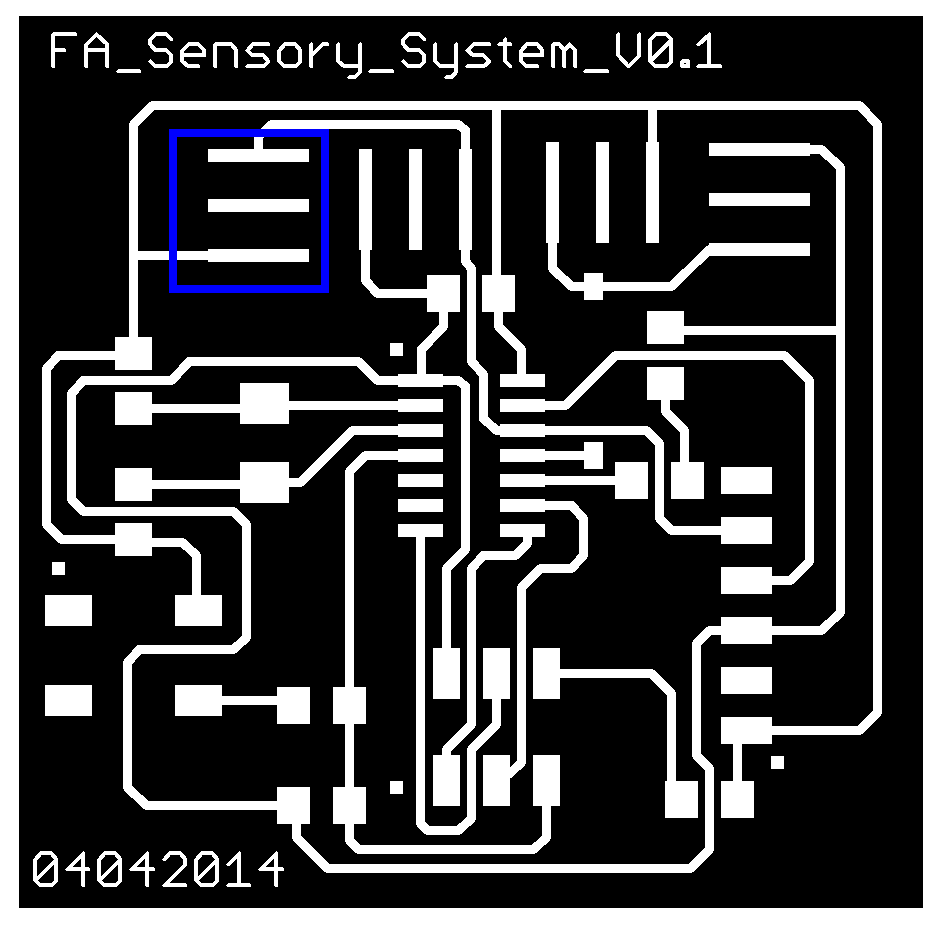
1) The file
with blue box depicts the first attempt of the board file. Both
the files are almost same except that the first board file has
extra pads overlapped on the original SMD pin-heads.
2)
This change helped to move ahead from issues in the first board
(shown below).
3) Running DRC shows the overlap error.
However, becasue it has been deliberately introduced, I approved
the error and moved ahead.

Issues with the PCB
1) The green box shows that the track is stripped off.
2) Yellow boxes depict the limitations during routing. These are jumper wires. A better routing is feasible and needs to be done.
I could have used 0 Ohm resistors as jumpers, however, they were not available locally.
3) The red boxes show that the width of the text was not sufficient. The board file above has been corrected accordingly.
4) Post these errors, I have milled the new board, however component placement and putting some intelligence inside remains.
